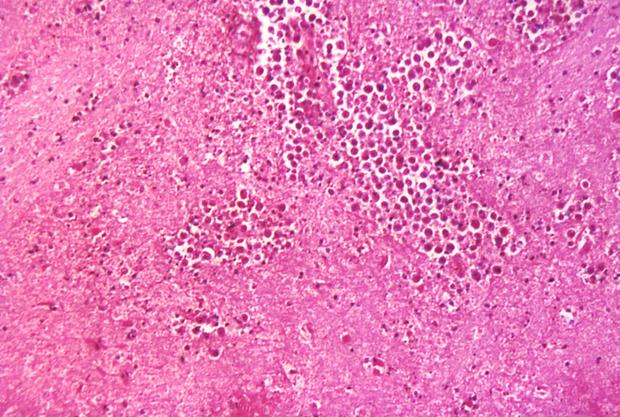Brain-eating amoeba suspected in Nebraska child’s death, officials say
[ad_1]
A child has died from a suspected infection with Naegleria fowleri – or brain-eating amoeba – in Nebraska, health officials said Wednesday. If confirmed, it would be the first known death from it in the state.
The Douglas County Health Department said in a news release that the child “possibly acquired” the infection while swimming in the Elkhorn River on Sunday. While the Centers for Disease Control and Prevention are conducting further tests to confirm what it was, the county is urging residents to take precautions when being exposed to freshwater sources.
“We can only imagine the devastation this family must be feeling, and our deepest condolences are with them. We can honor the memory of this child by becoming educated about the risk and then taking steps to prevent infection,” Douglas County Health Director Dr. Lindsay Huse said in a statement.
/ Getty Images
The amoeba – which causes primary amebic meningoencephalitis – is present in many freshwater sources and it can infect people when water containing the organism enters the body through the nose and reaches the brain, typically while swimming or diving, according to the Douglas County Health Department. However, a person cannot be infected while drinking contaminated water, and it does not spread person-to-person.
Symptoms, which include vomiting, headaches, nausea and fever, usually occur within 1 to 12 days following an infection. It may progress into a stiff neck, seizures and other neurological symptoms.
Nebraska epidemiologist Dr. Matthew Donahue said that while millions of recreational water exposures happen each year, anywhere from zero to eight Naegleria Fowleri infections are identified annually.
“Infections typically occur later in the summer, in warmer water with slower flow, in July, August and September. Cases are more frequently identified in southern states but more recently have been identified farther north. Limiting the opportunities for freshwater to get into the nose are the best ways to reduce the risk of infection,” Donahue said in a statement.
Throughout the summer, other cases of brain-eating amoeba have been identified in other states. A Missouri resident died after he swam in an Iowa lake and contracted primary amebic meningoencephalitis. A Florida teen was hospitalized after the rare brain-eating amoeba got in his nose and infected him.
[ad_2]
Source link












